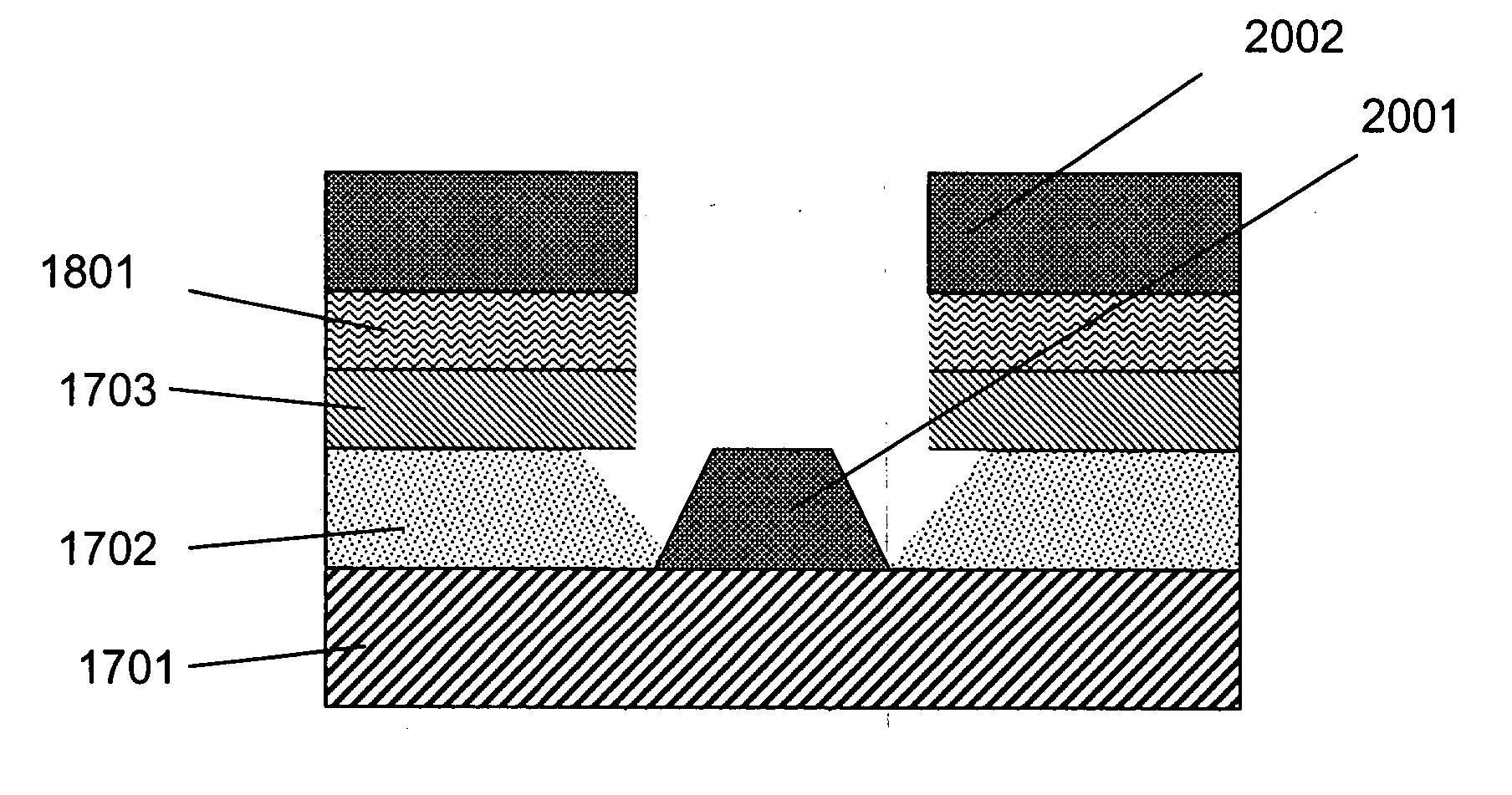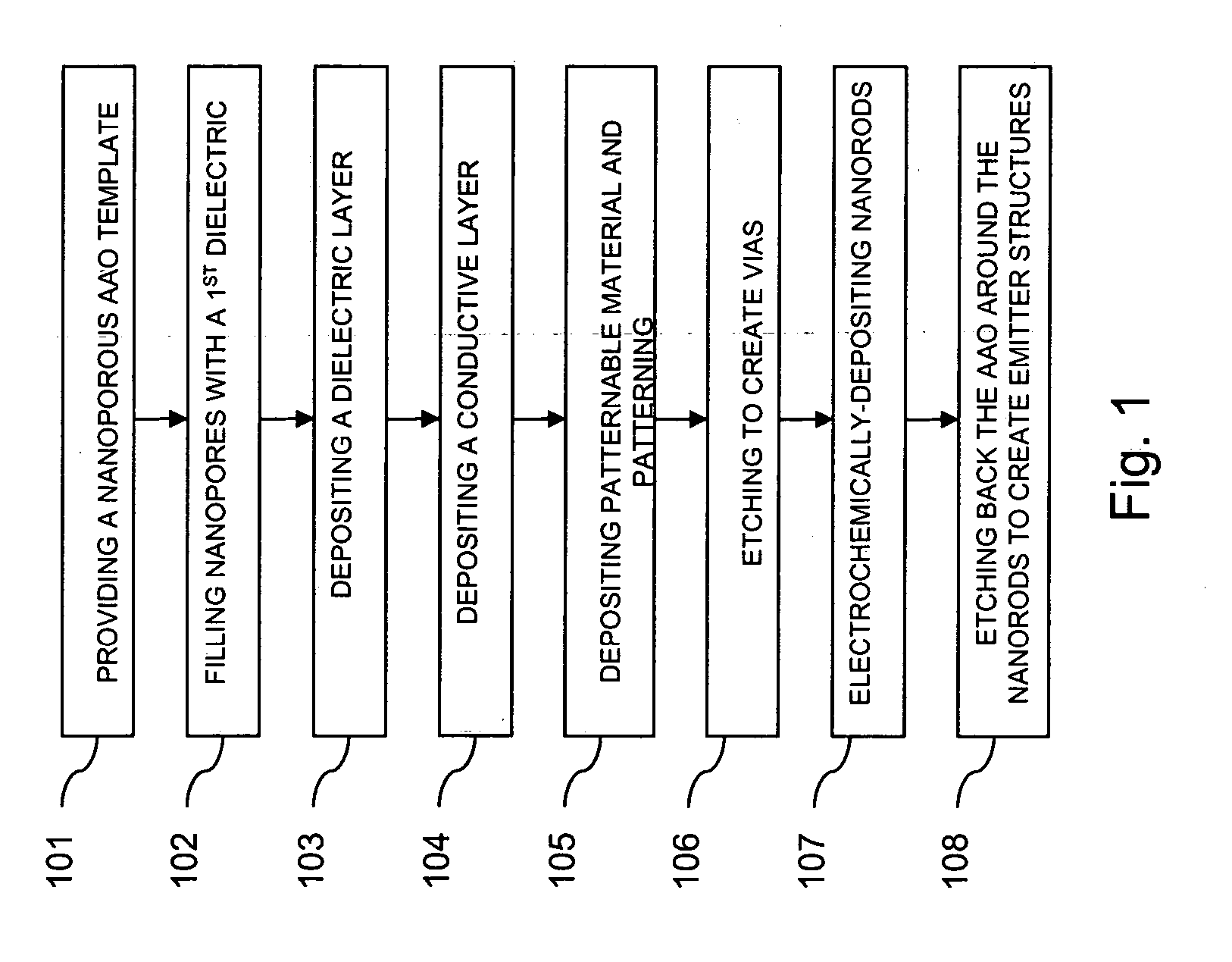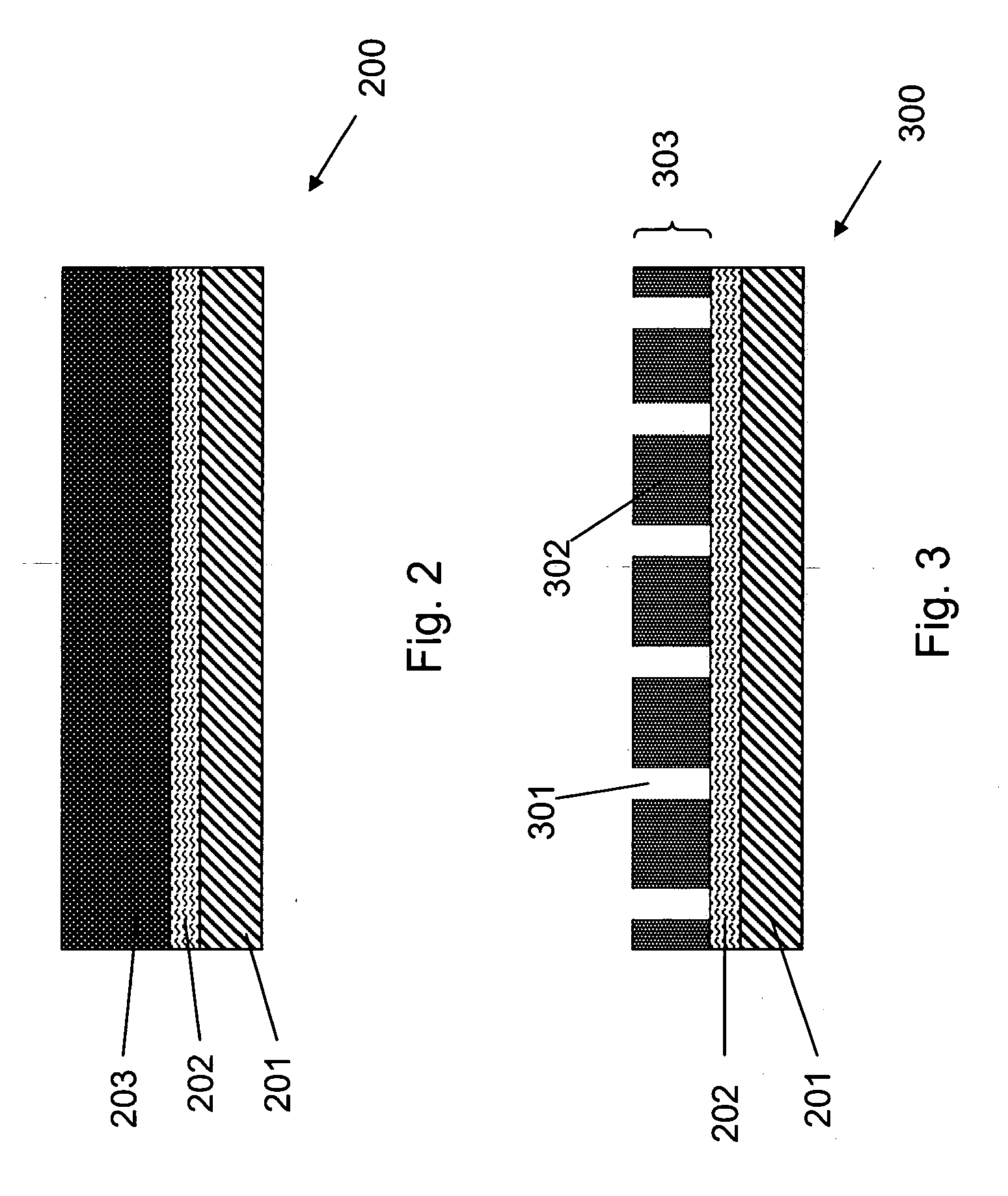Gated nanorod field emitter structures and associated methods of fabrication
a nanorod and emitter technology, applied in the manufacture of electrode systems, electric discharge tubes/lamps, tubes with electrostatic control, etc., can solve the problems of limiting the operation life of fluorescent lighting, low pressure gas discharge lighting and fluorescent lighting, and reducing power consumption/dissipation
- Summary
- Abstract
- Description
- Claims
- Application Information
AI Technical Summary
Benefits of technology
Problems solved by technology
Method used
Image
Examples
example 1
[0116] This Example serves to illustrate fabrication of a gated field emitter device (e.g., device 133, shown in FIG. 13), in accordance with some embodiments of the present invention.
[0117] A Si wafer was cleaned using a KEROS (peroxide and sulfuric acid clean also known as a piranha etch) and HF dip. On the cleaned wafer various layers were deposited in the following order and with the following thicknesses: 200 Å TiW / 500 Å Au / 60 Å Ti / 1 μm Al. The TiW was used as an adhesion layer, Au as the conductive layer, and Ti as the sacrificial barrier layer. The Al in this layered stack was then anodized to create nanoporous AAO. During this process, the top Ti layer oxidized to form insulating TiOx (sacrificial barrier layer). The TiOx sacrificial barrier layer was etched using a wet etching solution (80 parts H2O: 1 part HF: 1 part H2O2) for 30 seconds. Upon removal of the TiOx, the nanopores in the nanoporous AAO extend down to the conductive Au layer and form a template in which nanor...
example 2
[0123] This Example serves to illustrate fabrication of a gated field emitter device (e.g., devices 3500 and 3900, shown in FIGS. 35 and 39, respectively), in accordance with some embodiments of the present invention.
[0124] A Si wafer was cleaned using a KEROS and HF Dip. On the cleaned wafer various layers were deposited in the following order and with the following thicknesses: 200 Å TiW / 500 Å Cu / 150 Å Ti / 1 μm Al. The TiW was used as an adhesion layer, Au as the conductive layer, and Ti as the sacrificial barrier layer. The Al in this layered stack was then anodized to create a substrate supported nanoporous AAO template. During this process, the top Ti layer of the stack is oxidized to form insulating TiOx (sacrificial barrier layer).
[0125] Spin-on-glass (SOG) was applied to the top of the nanoporous AAO template and then annealed at 425° C. for 30 minutes with a 2 hour cool. The SOG was then etched from the surface using ICP for 5.5 minutes (time is dependent on SOG thickness)...
example 3
[0126] This Example serves to illustrate fabrication of a gated field emitter device (e.g., devices 3500 and 3900, shown in FIGS. 35 and 39, respectively), in accordance with some embodiments of the present invention.
[0127] A Si wafer was cleaned using a KEROS and HF Dip. On the cleaned wafer various layers were deposited in the following order and with the following thicknesses: 200 Å TiW / 500 Å Cu / 150 Å Ti / 1 μm Al. The TiW was used as an adhesion layer, Cu as the conductive layer, and Ti as the sacrificial barrier layer. The Al in this layered stack was then anodized to create a substrate supported nanoporous AAO template. During this process, the top Ti layer of the stack is oxidized to form insulating TiOx (sacrificial barrier layer). Note that this sacrificial barrier layer is formed in all of the Examples presented herein.
[0128] Spin-on-glass (SOG) was applied to the top of the nanoporous AAO template and then annealed at 425° C. for 30 minutes with a 2 hour cool. The SOG was...
PUM
 Login to View More
Login to View More Abstract
Description
Claims
Application Information
 Login to View More
Login to View More - R&D
- Intellectual Property
- Life Sciences
- Materials
- Tech Scout
- Unparalleled Data Quality
- Higher Quality Content
- 60% Fewer Hallucinations
Browse by: Latest US Patents, China's latest patents, Technical Efficacy Thesaurus, Application Domain, Technology Topic, Popular Technical Reports.
© 2025 PatSnap. All rights reserved.Legal|Privacy policy|Modern Slavery Act Transparency Statement|Sitemap|About US| Contact US: help@patsnap.com



